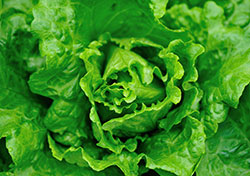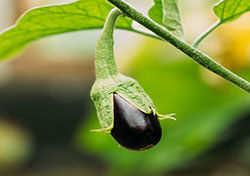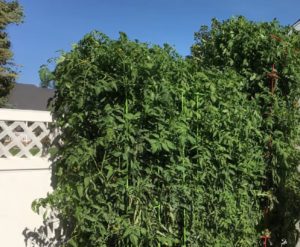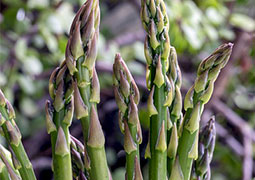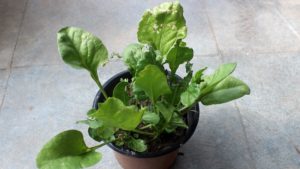Having a long lasting supply of lettuce is truly rewarding; that’s why here I will teach you how to grow lettuce in your backyard or even indoors.
You’ve probably heard or tasted lettuce in salads, soups, or sandwich. This is a vegetarian favorite or a health conscious favorite since it contains a lot of nutrients, which is great for your health and body.
In fact, some people call this green leafy vegetable a wonder veggie. It is rich in calcium, vitamins, Folate, and Potassium. You really can’t complain with all the health benefits of lettuce.
There are also a number of uses for Lettuce. Of course, you could add it to your favorite salad, but you could also place it in soup or your favorite hamburger or sandwich.
It has a mild nutty taste that complements the sweetness of other salad vegetables and the saltiness or acidity of the dressing. It also has a dry and crunchy texture that closely relates it to its cabbage family.
Consuming lettuce is really the right way of treating yourself. Aside from the health benefits that it gives to you upon consumption, it also gives therapeutic benefits that could relieve stress and fatigue.
That’s why I am a number one lettuce fan. I make sure that I include this vegetable in my diet plan. It’s one of the vegetables that you could add when you’re having a cheat day.
I need a long lasting supply, so I grow them in my garden.
Nothing beats a fresh lettuce. Other than buying it in the grocery or the nearest market, harvesting your fresh lettuce and serving it to your family would be really satisfying.
Grow Your Own Lettuce
Lettuce came from the family of Asteraceae family. This green leafy plant is a cool season type of plant.
While the benefits of this plant would be a long list, you will be amazed at how easy to grow this plant. This vegetable should be weeks before the spring and fall frost. They could even withstand extreme weather conditions.
It’s perfect for gardening beginners like you. It won’t need a lot of background in gardening and you won’t need to exert extreme work to successfully harvest mature lettuce leaves.
It won’t need a lot of space; it could grow in containers. It could also be used as an ornamental since some varieties could yield beautiful looking leaves. You could choose from purple to green leaves or flat to curly leaves.
You see: this plant could be the winner of the least maintenance plant.
The only obstacle you will be facing is diseases and pests. Since the majority of the plant part is left alone, you might encounter more pests than usual. This plant is also notorious for rot diseases.
While growing lettuce is really easy, but the pest and disease prevention might take more effort, this plant is really rewarding to plant. Especially because there are a number of benefits in consuming it.
HOW TO GROW LETTUCE:
EVERYTHING YOU NEED TO KNOW FROM PLANTING TO HARVEST
Are you excited to start your gardening project? If this is you first gardening project, don’t worry. I’ll give you all the information you need for a better yield and plant growth. So hurry and get your pen and paper because Lettuce Gardening Class is about to start.
Planting Lettuce
How do I choose the right variety of lettuce?
Aside from the green leafy lettuce that we all know and love, there are other varieties of lettuce that could surprise you. It naturally differs on form, taste, color of the leaves. You may want to check out some of my top lettuce varieties here:
- Crisp Head or Iceberg
From the name itself, this variety is different from the other since it has a tight head of crisp leaves. You’ve probably encountered this on salad bars and your favorite cheese burger. It’s not the easiest plant to grow because it is particular in temperature. - Summer Crisp, French Crisp, or Batavian
This group of lettuce is right in the middle of crisphead and looseleaf. This variety is known for being resistant to bolting. It is also the largest lettuce family among the other groups. - Butterhead, Bibb, or Boston
Lastly, Butterhead is a delicate one. It has a gradient color of light green on the inside and green on the outside with ruffled leaves. This is a lot easier to grow than the crispheads because they are more tolerant to conditions.
Some other notable mentions are Romaine (Cos) and Looseleaf ( Leaf, Cutting, or Bunching. These varieties are also premium in taste and look.
There are actually a lot of varieties to choose from under each group. Just determine your goal for planting lettuce.
If you want experience, go with the easy ones.
If you need lettuce for garnish, go with the beautiful and colorful ones.
And if you need lettuce for commercial production, go for the easiest ones to grow.
Where can I find lettuce seeds?
Look for lettuce seeds from nurseries and gardening shop near you. Make sure to choose quality or disease-resistant varieties to avoid other diseases.
You may also want to check this seeds from Amazon. I personally use them because of the quality of leaves that these produce.
It’s important to look for seeds that came from healthy and premium quality mother plant.
It could actually grow again after harvest, that’s why you could start out with minimal plants.
After harvesting the leaves, this plant could regrow leaves again for your next harvest. With this amount of lettuce, you might be eating salads for the next few months.
When is the best time to plant lettuce?
Lettuce should be planted before the spring and fall frost. This type of plant could tolerate fall and spring frosts, so they grow well during the spring and fall.
To be specific, plant two weeks before spring frost and eight weeks before fall frost.
That’s why the optimum time to plant lettuce is during early spring and fall.
But if you live in a cool-summer region, plant the seeds during early spring to harvest during the summer or early fall.
On the other hand, if you are living in a hot-summer region, plant lettuce in late summer for a late fall or winter harvest.
What is the best container to use when planting lettuce?
For this gardening lesson, we will be planting lettuce in garden beds, not in containers.
But we will be using small pots for growing the seedling before transplanting.
A small pot or seedling tray will work for this.
But if you wish to place your lettuce plant in a container, choose a pot with at least six inches deep. They won’t need a deeper container since they have shallow roots.
For better results in yield, choose a shallow and wide pot. You may choose any container material. Whether plastic or clay pots, lettuce could grow well in this.
How do I plant lettuce seeds?
You may want to either direct seed into the garden bed or plant this separately to let the seedlings grow.
I prefer planting in separate containers first and transplanting it to the garden bed.
Transplanting is actually proven to be faster in letting the plant mature.
Maturity of plant also depends on the variety of lettuce. Crisphead takes 75 to 100 days to mature, and Romaine may take 75 to 85 days. While looseleaf and butterhead could be harvested anytime.
Plant 2 weeks before the last spring frost or eight weeks before the last fall frost.
Place one to two seeds per container a quarter or a half deep into the soil. Make sure not to leave the soil dry out because this plant needs enough moisture on the soil.
This could germinate quickly, given the right environmental conditions. Seeds start to germinate in seven to ten days, but for faster growth, place it outside under direct sunlight.
How do I prepare for transplanting lettuce?
Since lettuce plant has a majority of leaves to grow and develop, a rich soil is recommended in making this grow. This means that the soil is full of nutrients from organic matter.
The most preferred soil temperature for planting lettuce is 55 to 65 degrees Fahrenheit which is relatively cooler. It could handle frost during fall and spring. But just like other plants, it might not survive an inclement cold weather conditions.
To start, loosen the top 10 inches deep of soil. Then, add compost or organic fertilizer into the mixing it at least one inch into the soil.
Moreover, prepare the seedlings to be transplanted since the will encounter change in weather conditions. You may start hardening off seeds that are three weeks old.
Harden the seeds off by slowly introducing it outside. Transfer the seed tray outside. Start by transferring it in a minimum time then, gradually giving it more time outside.
How do I plant lettuce?
If you’re planting during the colder season, find a great spot to get full sun exposure. This plant is a cool-weather crop that can tolerate temperatures as low as 40 degrees Fahrenheit.
But take note that the optimum germination temperature is 55 to 65 degrees Fahrenheit.
After four weeks, transplant the seedlings into the garden bed.
A seedling with four to six mature leaves are ready to be transplanted.
Take note also that transplanting should be scheduled near the last frost-free date.
Although this plant could withstand cold weather conditions, strong winter frost could hinder their growth.
Plant a quarter to a half inch of the seedlings deep into the soil.
Plant each seedling 12 – 15 inches apart from one another. This would give them enough space to grow and spread out their leaves. This would also give enough space for air circulation.
However, the spaces also depend on the type of lettuce you are planting. For leaf lettuce, plant 4 inches apart. For cos and loose headed, plant 8 inches apart. While firm headed should be planted 16 inches apart.
You could actually grow lettuce in containers or raised beds. It actually depends on the space you have in your home. If you have a bigger space, I highly suggest to plant lettuce on your garden beds.
Growing Lettuce
How and when do I thin my lettuce plant?
Since we transplanted the plant into the garden soil, enough space has been given to the lettuce plant to grow. Thinning should not be employed anymore.
Heavily mulch the soil after the first hard freeze. The effect of mulch in the soil will result in enough moisture that is conducive for the growth of lettuce. It also results in weed prevention.
How can I properly water my lettuce plant?
Water the plants regularly, but do not overwater them. Overwatering is not the worst case, but underwatering the plant.
Keep the soil moist to encourage growth in this plant. A retained moisture in the soil also results to sweeter and crisper leaves.
This plant could also tell you if it needs watering. When the leaves start to dry, water the plant thoroughly. It doesn’t matter what time of day it is. When it needs water, it shall be given to maintain the quality of the soil.
That’s why it’s better to keep your soil moisturized at all times by regularly watering the plant.
Which fertilizer should I use for my lettuce plant and when do I use it?
Since this type of crop relies on the beauty and freshness of its leaves, you must ensure that the leaves are highly pigmented, crips, and fresh.
That’s why you should always put compost every three weeks.
If you want to use fertilizer, you may opt for a fertilizer that could boost growth and are good for healthy leaves.
This is what nitrogen induced fertilizers are for. They are highly beneficial to the growth of the leaves. I personally use organic fertilizers like fish emulsion to avoid chemical content on your harvest.
Maintaining an organic growth is still our priority.
How much sun does my lettuce plant need?
Since this plant is popular for its crunchy and fresh leaves, the leaves should be again prioritized.
To ensure quality, a partly sun exposure to full sun exposure is required.
However, too much heat could result to dryness and bitter taste to the plant. Be sure to water the soil well to ensure that moisture is retained on the soil, even if the weather is too hot or humid.
Which climate better suits lettuce? (Best Hardiness Zones)
While this plant does not require a certain type of weather to grow, it thrives best in Hardiness 4 onwards.
As mentioned a lot of times, this plant is cold-loving plant. Therefore, it should be planted on cooler areas, which means that hot and humid weather conditions should be avoided. But it could withstand warm weather conditions.
However, full sun exposure is still paramount since their primary crop is their leaves. And leaves need sun exposure in order to have big, crispy, and pigmented leaves.
They could also thrive in part sun exposure, but again, if you want best results expose them in full sun exposure.
How long does it take to grow lettuce and what should I expect in each growing stage?
It usually depends on the variety that you are planting and the location you are planting. This will greatly affect the time of harvest, but it usually takes 75 to 120 days of harvest.
Since the harvest time is not that long, the growth stages are actually few. On the first weeks, the seed germinates to form seedlings.
After five to six weeks, this will have four to six leaves. Then, it is ready to be transplanted to the garden bed.
Then, after 10 to 17 weeks, the leaves are fully developed and are ready for harvest. Unfortunately, this plant will not regrow once you cut the leaves. You have to start from scratch and plant again via seeds.
What are the common diseases and pests of lettuce and how do I avoid It?
Since lettuce is a member of the Asteraceae family, this plant is a favorite of small insects and fungal diseases.
The most notorious pest of this type of plants is aphids, while the most common disease would be rot type.
To better diagnose the type of disease or identify the species of the pest, you may refer to the details below. I also gave tips on how I usually deal with these pests and diseases.
- Slugs & Snails
The early sign of this infestation is the presence of holes in the leaves. This infestation could lead to serious impact in your crops, especially since you wanted to maintain fresh and healthy leaves.
To manage this pest, you should maintain a clean garden ground. Make sure to clean the trash and regularly employ weeding. - Shot Hole
This type of disease is caused by fungi called Microdochium pannatonianum.
You could easily see the signs through water soaked tan spots in your plant. But the worst case scenario is the falling out of leaves, leaving a shot hole look in the plant.
To manage this, you should rotate the crops and avoid watering over the plant. Water directly to the soil. - Aphids
Aphids are small insects that is a member of the family Aphidoidea. They usually suck on the sap of lettuce.
To manage this pest, make use of natural predators that could control the population of insects.
What other crops could I plant together with lettuce?
If you are like some gardeners who wants to maximize the planting space, you could opt for companion planting. However, keep in mind that not all plants go well with each other.
Just like us humans, there are just certain types of plants that would go well with lettuce in the garden bed. Here are some of the best plants you could plant near lettuce for a mutually beneficial growth.
Make sure to plant this plant near herbs. Since this plant attracts leaf-eating insects, they need to be near insect repellants. Good thing most herbs are natural insect repellants.
Moreover, you could also plant it to plants that attracts the natural predator of the most notorious pests of lettuce.
What are the crops that will not go well with lettuce?
On the other hand, you should not plant lettuce beside broccoli, Brussels sprouts, cabbage, and cauliflower. Make sure that they are kept away from your lettuce plant for a happy growth and harvest.
Harvesting Lettuce
When is the best time to harvest lettuce?
Lettuce usually matures after 70 to 120 days when planted outdoors, but if you planted indoors, it might take more time to grow.
This is because direct exposure to sunlight is paramount for the growth of this plant.
Afterwards, look at the growth of the plant. Mature plant is determined when the plant leaves are the same growth as your hand or more.
But you could actually harvest smaller or immature leaves. These leaves are usually used for salads. They have additional crisp, but the taste is a bit bitter.
The bigger leaves are usually used in cooking preparations, while the smaller leaves are used for salads.
How do I harvest lettuce?
To harvest lettuce, you don’t need tools and equipment. This could be done manually through your hands. This is actually less labor-intensive than other plants when harvested.
Start by the leaves one by one. For your first harvest, take a fistful of leaves by manually picking the leaves to the bottom-most part.
Just get the outer leaves. Don’t harvest the inner ones yet.
This helps in regrowing the leaves for the next harvest. This plant will regrow as long as the temperature is conducive for their growth which is 40 to 60 degrees Fahrenheit. This actually results in better crops since colder weather results to sweeter and crisper leaves.
Make sure that the plant is not too mature when you harvest. This may result in bitter and woody leaves that’s no longer tasty or crisp for cooking or raw eating.
Harvesting could last up to several months, especially if you harvested after a frost. This will make the leaves sweeter and crisper.
But monitor the strength and quality of your plant. Ensure that they are still viable to produce. If not, you have to start again from the start.
What is the best way to store the lettuce that I have harvested?
Before storing it in the refrigerator, wash lettuce properly. Look for damages that might be caused by infestation from bugs or fungi. Since this plant is usually eaten raw, it’s usually best to feed your family, friends, or yourself with healthy lettuce.
After making sure that each leaf is free from diseases or pest infestation, rinse of the excess water to avoid mold growth. Afterwards, place it in a plastic bag to avoid contamination. Then, place it on a vegetable chiller at the bottom-most location of the refrigerator.
This fresh lettuce could last up to one week.
Featured Table
| Botanical Name | Lactuca sativa |
| Plant Type | Vegetable |
| Sun Exposure | Part sun to full sun |
| Soil Type | Well-drained soil |
| Soil pH | 6 to 6.8 |
| Bloom Time | Early Spring |
| Flower Color | |
| Hardiness Zones | 4, 5, 6, 7, 8, 9 |

